

Birth to Three (Nursery)
Understanding the World –
● Explore and respond to different natural phenomena in their setting and on trips.
Three and Four Year Olds (Nursery)
Understanding the World –
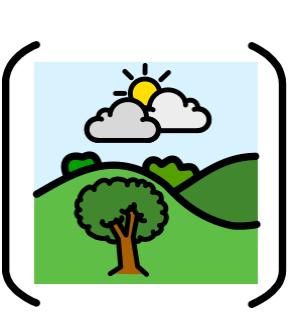
● Talk about what they see using a wide vocabulary. –
● Begin to understand the need to respect and care for the natural environment and all living things.
● Know that there different countries in the world and talk about the differences they have experienced or seen in photos.
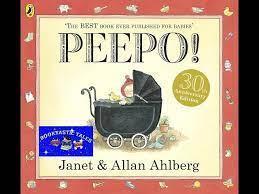

Birth to Three (Nursery)
Understanding the World –
● Explore and respond to different natural phenomena in their setting and on trips.
Three and Four Year Olds (Nursery)
Understanding the World –

● Talk about what they see using a wide vocabulary. –
● Begin to understand the need to respect and care for the natural environment and all living things.
● Know that there different countries in the world and talk about the differences they have experienced or seen in photos.
Birth to Three (Nursery)
Understanding the World –
● Explore and respond to different natural phenomena in their setting and on trips.
Three and Four Year Olds (Nursery)
Understanding the World –

● Talk about what they see using a wide vocabulary. –
● Begin to understand the need to respect and care for the natural environment and all living things.
● Know that there different countries in the world and talk about the differences they have experienced or seen in photos.
Key skills and knowledg e
Understanding the World
● Comment on images of familiar situations in the past.
● Compare and contrast characters from historical stories, including figures from the past
● Talk about significant events in their lives i.e. Halloween, holidays etc.
Past and Present
● Talk about the lives of people around them and their roles in society.

● Know some similarities and differences between things in the past and now, drawing on their experiences and what has been read in class.
● Understand the past through settings, characters and events encountered in books read in class and storytelling
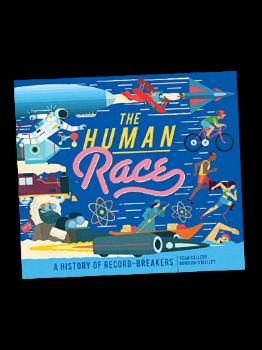

Understanding the World
● Comment on images of familiar situations in the past.
● Compare and contrast characters from historical stories, including figures from the past
● Talk about significant events in their lives i.e. Halloween, holidays etc.
Past and Present
● Talk about the lives of people around them and their roles in society.

● Know some similarities and differences between things in the past and now, drawing on their experiences and what has been read in class.
● Understand the past through settings, characters and events encountered in books read in class and storytelling
Understanding the World
● Comment on images of familiar situations in the past.
● Compare and contrast characters from historical stories, including figures from the past
● Talk about significant events in their lives i.e. Halloween, holidays etc.
Past and Present
● Talk about the lives of people around them and their roles in society.

● Know some similarities and differences between things in the past and now, drawing on their experiences and what has been read in class.
● Understand the past through settings, characters and events encountered in books read in class and storytelling
Local H story
-changes with n living memory – where appropriate, these shou d be used to reveal aspects of change in nationa life
British History
-The lives of s gnificant individuals in the past who have contr buted to national and internationa achievements, some should be used to compare aspects of life in different periods [for example Elizabeth I and Queen V ctoria, Christopher Columbus and Nei Armstrong, Wil iam Caxton and Tim Berners-Lee, Pieter Bruegel the Elder and LS Lowry, Rosa Parks and Emily Dav son, Mary Seaco e and/or Florence Nightingale and Ed th Cave l]
Being a H stor an: -Develop an awareness of the past, using common words and phrases relating to the passing of time
-Know where the people and events they study fit within a chronologica framework and dentify similarities and differences between ways of life n different per ods
Global History
-Events beyond living memory that are sign f cant nationally or global y [for examp e, the Great Fire of London, the first aeroplane f ight or events commemorated through festivals or ann versar es]
-Sign ficant historical events, people and places n the r own local ty
- Use a wide vocabu ary of everyday historical terms They should ask and answer questions, choosing and using parts of stories and other sources to show that they know and understand key features of events -Understand some of the ways in which we f nd out about the past and dentify different ways in which it is represented
AUTUMN TERM
LOCAL HISTORY
YEAR 1
Concepts
How have toys changed?
Build an overview of local/British/World History
Understand chronology and concepts
Communicate historically
Investigate and interpret the past
SPRING TERM
BRITISH HISTORY
The lives of significant individuals in the past who have contributed to national and international achievement
Build an overview of local/British/World History
Understand chronology and concepts
Communicate historically
Investigate and interpret the past
SUMMER TERM
GLOBAL HISTORY
Events beyond living memory that are significant nationally or globally:
Build an overview of local/British/World History
Understand chronology and concepts
Communicate historically
Investigate and interpret the past Enquiry Enquiry: How has toys changed in the lifetimes of my family? Enquiry: Look at the life of Beatrix Potter Enquiry: How have fossils given us clues about the past?
Vocabulary
Year, decade, date, order, timeline, living memory, long ago, toys, rich, poor
Year, decade, century, date, order, timeline, living memory, long ago, writer, author, Lake district, local, Peter Rabbit.
Decade, century, date, order, timeline, living memory, long ago, fossils, dinosaurs
Key skills and knowledg e
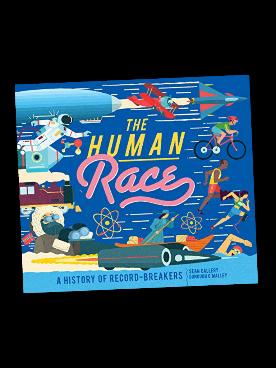


Key Knowledge:
● Life of Beatrix Potter through pictures and stories (chronology, historical evidence)
● How was Beatrix Potter significant and what contribution has she made. (Peter Rabbit)
● Trip to Beatrix Potter Museum – Lake District

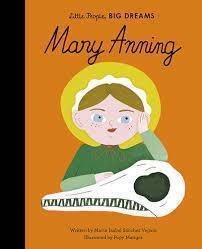
Chronol ogy
Significa nt
Key Knowledge:
● Interviews with members of the family about toys they used in the past (interpretations, historical evidence)
● Answering the enquiry question – how has toys changed in the lifetimes of my family? (change over time, interpretations)
The Skills:
● Past and present sorting pictures (chronology, change over time)
● Ordering objects /pictures of toys (change over time, historical evidence – including outreach session)
● Create simple pictorial timelines to show findings from interviews (chronology, change over time)
The arrangement of events or dates in order.
Great or important to be worthy of attention.
Contribu tion A part played by a person in bringing about a result.
The Skills:
● Placing main events of her life in order (chronology) on a timeline
Key Knowledge:


● Vocabulary – fossil
● Answering the enquiry question (reasons and results, interpretations using photos and books as secondary evidence) linking to David Atten Bourgh walking with dinosaurs.
Fossil Remains or impression of a prehistoric plant or animal Paleonto logy Science concerned with fossils.
Prehisto ric The period of time before written records.
The Skills:
● Use evidence from Mary Anning (Stone girl, Bone girl) to answer the enquiry question.
● To create a timeline of Mary Anning’s first discovery to present day building on chronology from Beatrix Potter.
Year Two- National Curriculum
Local H story
-changes with n living memory – where appropriate, these shou d be used to reveal aspects of change in nationa life
-Signif cant h stor cal events, people and places in their own loca ity
British History
-Events beyond living memory that are signif cant nationally or global y [for example, the Great F re of London, the first aeroplane flight or events commemorated through festiva s or ann versar es]
Global History
-The lives of significant individuals n the past who have contributed to national and internationa achievements, some should be used to compare aspects of life n different per ods [for example, Elizabeth I and Queen Victoria Christopher Columbus and Neil Armstrong Wil iam Caxton and T m Berners-Lee, Pieter Bruegel the Elder and LS Lowry, Rosa Parks and Emily Dav son, Mary Seacole and/or Florence Nightingale and Ed th Cavel ]
-Sign ficant historical events, people and places n the r own local ty
Being a H stor an:
-Develop an awareness of the past, using common words and phrases relating to the passing of time
-Know where the people and events they study fit within a chronologica framework and dentify similarities and differences between ways of life n different per ods
- Use a wide vocabu ary of everyday historical terms. They should ask and answer questions, choosing and using parts of stories and other sources to show that they know and understand key features of events.
-Understand some of the ways in which we f nd out about the past and dentify different ways in which it is represented

AUTUMN TERM
LOCAL HISTORY
YEAR 2
Significant historical events, people and places in their own locality:
Build an overv ew of local/British/World History
Concepts
Understand chronology and concepts
Communicate h storica ly
Investigate and interpret the past
Enquiry
Vocabulary
Enquiry: What impact does the Lifeboat have specifically on our local area? (Blackpool)
Chronological order, Significant, Research, Evidence, photos, lifeboat, timeline, change, similarities and differences, Grace Darling, Because.
Key Knowledge:
● What is the lifeboat? Look at photos (historical evidence of how lifeboats developed – linking to Grace Darling)
● Vocabulary - lifeboat
● Ask questions about the change of the lifeboat and the impact it has in Blackpool (historical evidence, interpretations, images, write a letter)
● Trip to Lifeboat Station?

Key skills and knowledg e
Lifeboat A boat launched to rescue people
Crew A group of people who work on a boat or a ship
Launch A boat in movement by allowing it to be pushed or rolled into the water.
Hovercra ft A vehicle that travels over land and water.
Knot Measures the speed a boat is travelling.
The Skills
● TiTo create a timeline of the lifeboat from start to present day specifically looking at Grace Darling and founder of the Lifeboat. (chronology)
● Compare photos and maps to show how Blackpool Lifeboat station has changed over time, historical evidence
SPRING TERM
BRITISH HISTORY
Events beyond living memory that are significant nationally or globally:
Build an overview of local/British/World H story
Understand chronology and concepts
Communicate historically
Invest gate and interpret the past
Why was the Great Fire of London important in world history?
Chronological order, Significant, Research, Evidence, Samuel Peeps, Charles II, Pudding Lane, London, timeline.
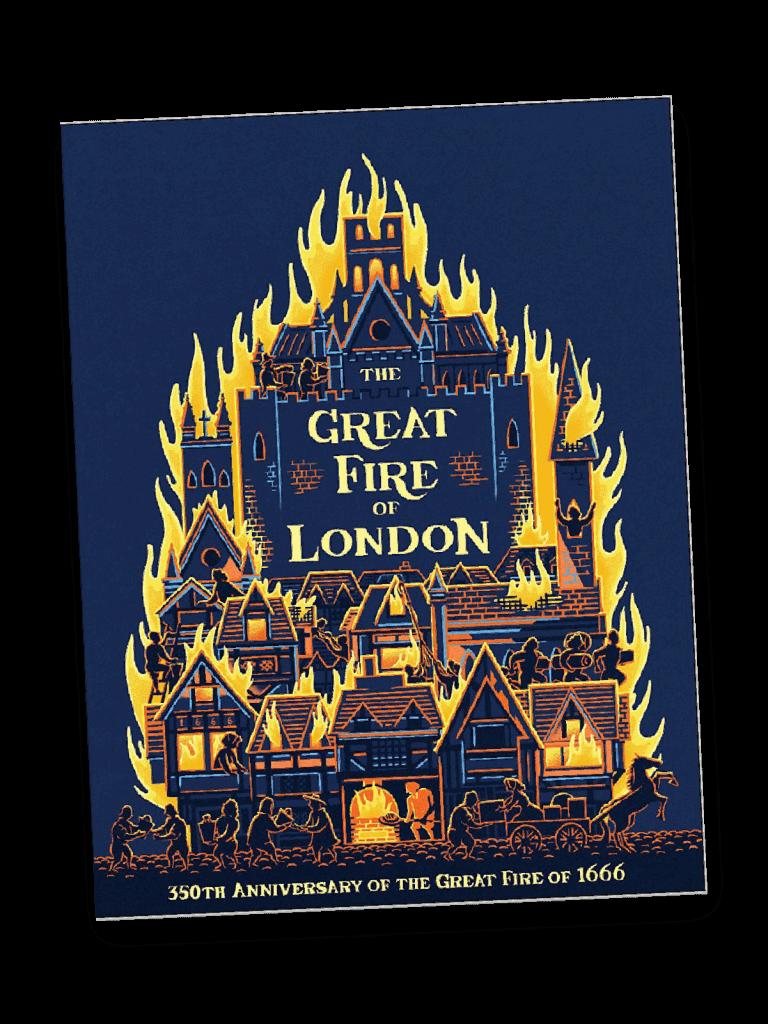
Key Knowledge:

● Asking questions based on photos and stories of the event (historical evidence, interpretations)
● Asking questions based on what the houses were made from to answer why and how the fire spread.
● Vocabulary – Great Fire of London
Great
plague A deadly illness that spread across England in 1665
Pitch The steepness of a slope
Building A structure with a roof and walls.
Bakery A place where bread and cakes are made.

Flames Hot glowing glass that is generated by something being on fire.
Diary A book where someone keeps personal records
Ruins The physical destruction of something.
The Skills:
● Overview on a timeline of the great fire and a timeline of the reign of Charles II (chronology)

SUMMER TERM
GLOBAL HISTORY
The lives of significant individuals in the past who have contributed to national and international achievements:
Bu d an overview of local/British/World History
Understand chronology and concepts
Communicate historically
Investigate and interpret the past
Enquiry: To research the life of explorers such as Christopher Columbus and what he achieved?
Chronological order, Significant, , Research, Evidence, artefact, exploring, Asia, slavery, rich, poor.
Key Knowledge:
● Ask questions about the life of Christopher Columbus and answer them using evidence from artefacts and photos (historical evidence, interpretations)
Explorer A person who explores a new area
Voyage A long journey involving travelling by sea or space.
Renaissa nce A period of time that moved away from the middle ages.
Navigate Plan and direct the course of a ship.
Colony An area under political control
The Skills:
● Ordering events on a timeline within Christopher Columbus lifetime – 1492 discovery of New World (chronology)
● Researching his impact of people at the time and how that has improved the lives of people today (foods, travel)


Year 3- National Curriculum
Local H story
-A ocal history study- a study over time tracing how several aspects of national history are reflected in the loca ity (this can go beyond 1066)
British History
-Changes n Britain from the Stone Age to the Iron Age Non Statutory l nks:
- ate Neol thic hunter-gatherers and early farmers, for examp e, Skara Brae
-Bronze Age rel gion, technology and trave , for examp e, Stonehenge
-Iron Age h ll forts: tribal kingdoms, farming, art and cu ture

Global History
-The achievements of the earl est c vil zations – an overv ew of where and when the first c vi izations appeared and a depth study of one of the following: Ancient Sumer, The Indus Valley
Ancient Egypt The Shang Dynasty of Ancient China
Being a H stor an:
-Develop a chronolog cally secure knowledge and understand ng of British, ocal and wor d history, establ shing clear narratives within and across the per ods they study.
-Note connections, contrasts and trends over time and develop the appropriate use of historical terms
- Regularly address and sometimes devise historically val d quest ons about change, cause, similarity and difference, and significance
-Construct nformed responses that involve thoughtful se ection and organisation of relevant historical information.
- Understand how our know edge of the past is constructed from a range of sources


AUTUMN TERM
LOCAL HISTORY
A local history study – a study over time tracing how several aspects of national history are reflected in the locality:
YEAR 3
Build an overv ew of local/British/World History
Concepts
Understand chronology and concepts
Communicate h storica ly
Investigate and interpret the past
Enquiry
Vocabulary
Enquiry: How did life change for children in North West England during the Industrial Revolution?
BCE CE BC AD, Period, Thousands of years, Archaeology/archaeologist, Sources, Significance, First hand/second hand, evidence, Settlements, Historian Industry, Industrial revolution, Empire, Trade
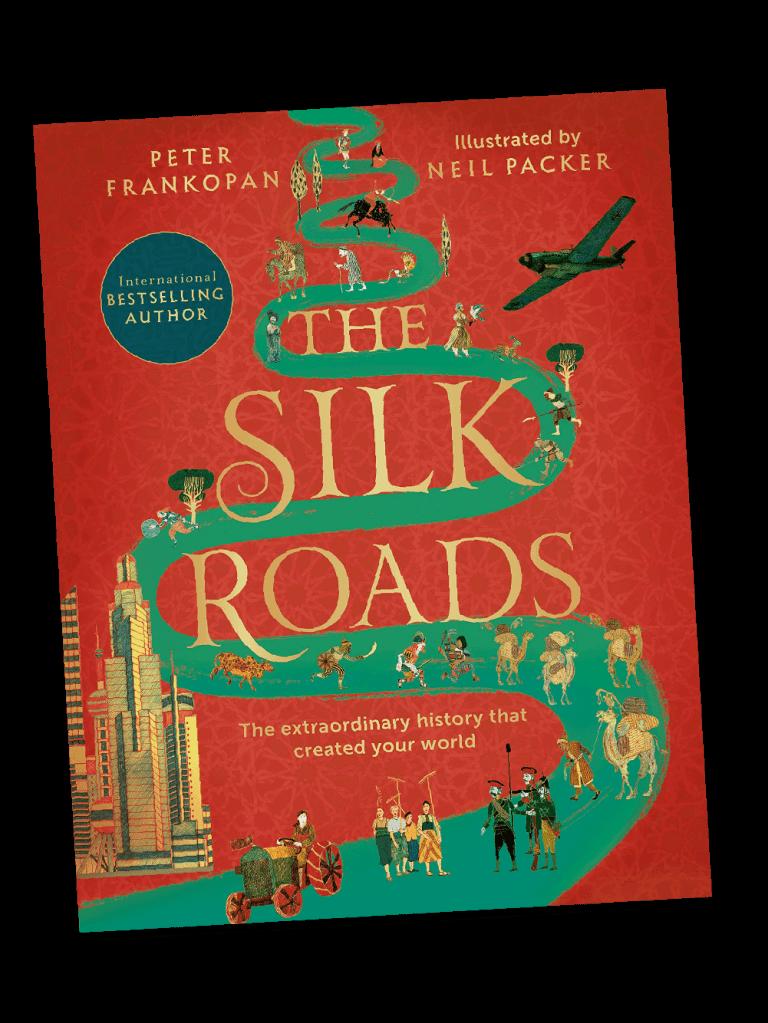
Key Knowledge:
Key skills and knowledge

● Learn about children’s lives at Quarry Bank Mill within work, education, health and play (historical evidence)
● Factory Acts 1833 - 1850 – how did these change life for children? (reasons and results)
● Discuss whether lives changed for better or worse Discuss how things may have seemed for people at the time as well as through the lens of the present day (interpretations, reasons and results) Link to children’ rights
Trip to Quarry Bank Mill, Wilmslow

Commodity A material or product that can be traded, bought or sold.
Globalisation The increasing connections between places and people around the world, including through trade.
Merchandise Goods to be bought and sold
Merchant A person who buys and sells commodities for profit
SPRING TERM BRITISH HISTORY
SUMMER TERM GLOBAL HISTORY
Changes in Britain from the Stone Age to the Iron Age: The achievements of the earliest civilizations – an overview of where and when the first civilizations appeared and a depth study of one of the following: Ancient Egypt
Build an overview of local/British/World H story
Understand chronology and concepts
Communicate historically
Invest gate and interpret the past
Enquiry: How did life change in Britain from the Stone Age to the Iron Age?
BCE CE BC AD, Period, Thousands of years, Archaeology/archaeologist, Sources, Significance, First hand/second hand, evidence, Settlements, Historian, stone age, bronze age, iron age, settlements, food: hunting and farming,
Key Knowledge:
● How do we know about prehistory without written records? Look at archaeology (historical evidence, interpretations)
● Look at old Stone Age – look at stone spearheads (historical evidence - primary sources)
● Look at New Stone Age - first farmers How did farming change how people lived? (change over time, reasons and results)
● Look at Bronze Age – bronze age tool (historical evidence - primary sources)
● Look at Iron Age – compare pictures to see changes (historical evidence, interpretations)

● What changed and what stayed the same from Stone Age to Iron Age? (change over time, historical similarity and difference)
Possible Trip to Creswell Crags Worksop (or alternate site)
Stone Age
Neolithic A period where people had started farming.
Mammoth A large extinct elephant.
Fur pelt Animal skin worn as a coat.
Skara Brae A stone built settlement
Spear A weapon with a pointed tip Borer A tool for boring.
Hammerstone A hard cobble used to strike flames.
Bronze Age
Bu d an overview of local/British/World History
Understand chronology and concepts
Communicate historically
Investigate and interpret the past
Enquiry: Who were the Ancient Egyptians and what can we learn from them?
BCE CE BC AD, Period, Thousands of years, Archaeology/archaeologist, Sources, Significance, First hand/second hand, evidence, Settlements, Historian, Tomb, Cleopatra, Civilisation, Hieroglyphs, Hierarchy, Inventions, Mummification
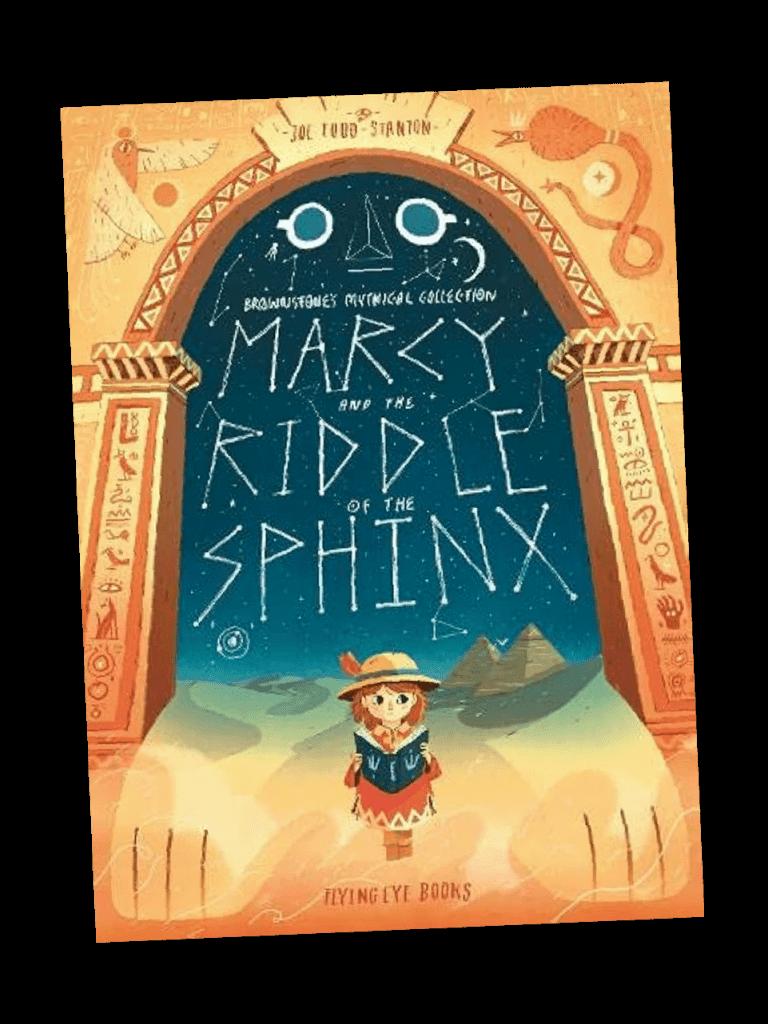
Key Knowledge:

● Link back to Stone Age-Iron Age Britain. Overview of Ancient civilisations in the world timeline – Outreach session (chronology)
● To investigate the inventions and achievements of the ancient Egyptians.
Ancestor A person you are related to who lived a long time ago
Anubis God of the afterlife
Artefact An object that was made by humans; often historically interesting
Bast Goddess of cats
Isis Goddess of nature and magic
The North Star A bright star in the sky above the North Pole; also known as Polaris
Nut The goddess of the night sky
Ra The sun god
The Sphinx A sphinx is a mythological creature with a human head and a lion’s body; the Sphinx is a monument in Egypt

Trade Buying and selling goods and services
The Skills:
● Compare images of NW England pre-and post-Industrial Revolution (change over time, chronology, reasons and results)
● Timeline of Industrial Revolution (chronology)
Pottery Pots and dishes made of clay
Roundhouse A circular dwelling used in the bronze age.
Iron Age
Britons A native of Great Britain
Tribe A social group made up of families or generations.
War Conflict between two countries.
Warrior A brave or experienced soldier
Hill Fort A fort built on a hill
Settlement A place that was uninhabited that now forms a community.
The Skills:
● Timeline to chart back from present day to Stone Age, marking in Stone Age, Iron Age, Bronze Age (chronology)
● Use of BC and CE as historical conventions – Covered by Outreach Session -Enrichment
Year 4-National Curriculum
Local H story
-A ocal history study- a study over time tracing how several aspects of national history are reflected in the loca ity (this can go beyond 1066)
-A study of an aspect of h story or a site dating from a period beyond 1066 that s sign ficant in the local ty

which guards a pyramid
Thoth God of knowledge and the moon
The Skills:
● use artefacts to find out about who they were and how they lived.
● Use sources in order to discover who the pharaohs were and why they were important.
● Use a range of sources to find out about a period
Being
- Regularly
-Construct
- Understand how our know edge of the past is constructed from a range of sources
British History
-The Roman Emp re and its impact on Britain Non Statutory l nks:
-Julius Caesar’s attempted invas on in 55-54 BC
-The Roman Emp re by AD 42 and the power of its army
-Successful invasion by Claudius and conquest, including Hadr an’s Wa l
-British resistance, for example, Boud ca
-‘Roman sat on’ of Britain: s tes such as Caerwent and the impact of technology, culture and beliefs, including ear y Christ anity
Global History
-Ancient Greece – a study of Greek l fe and ach evements and the r influence on the western world

AUTUMN TERM
LOCAL HISTORY
YEAR 4
A local history study – a study over time tracing how several aspects of national history are reflected in the locality:
Build an overv ew of local/British/World History
Concepts
Understand chronology and concepts
Communicate h storica ly
Investigate and interpret the past
SPRING TERM BRITISH HISTORY
The Roman Empire and its impact on North West England:
Build an overview of local/British/World H story
Understand chronology and concepts
Communicate historically
Invest gate and interpret the past

SUMMER TERM
GLOBAL HISTORY
Ancient Greece – a study of Greek life and achievements and their influence on the western world:
Bu d an overview of local/British/World History
Understand chronology and concepts
Communicate historically
Investigate and interpret the past Enquiry
Enquiry: What was the impact of the slave trade on North West England?
Enquiry: What was the impact of the Roman Empire on North West England?
Enquiry: Can we thank the Ancient Greeks for anything in our lives today?
Vocabulary
Conversion, Achievements, Impact, Effects/consequences, Contrast, Change Slave
Key Knowledge:
● What is slavery? (vocabulary)
● Quick recap to look back at Cotton Industry and child workers (Y3) See book ‘Silk Roads’
● Look at primary and secondary sources linked to abolition of slavery – choose one campaigner (historical evidence, interpretations)
Key skills and knowledge
● Cause and effect of slave trade on NW England (reasons and results)
Slave A person who is forced to work and obey another and is considered to be their property.
Slavery The practice of owning slaves.
Primary Sources A first hand account of an event.
Secondary sources
An account of someone who did not experience the event first hand.
Abolition Officially ending something.
Campaign An organized action to achieve an end goal.
Cause Something that brings about an affect
Effect A change that happens when something is done.
Conversion, Achievements, Impact, Effects/consequences, Contrast, Change Romans: trade army government ore invasion, buildings, settlements, Resistance, Sophisticated Trade
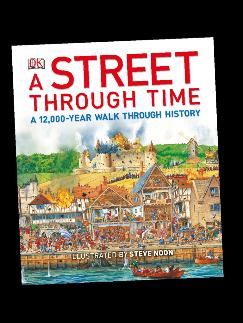
Key knowledge:

● Look at Roman Invasion - how and why did the Romans invade? (reasons and results)
● What evidence can we see today of the Romans in NW England? (historical evidence - primary sources, significance)
Ancestor A person you are related to who lived a long time ago
Chronological Arranged in order of time
Evolve Develop gradually
Industry A group of businesses that provide certain goods or services
Invasion Entering a place as an enemy in an attempt to take control of it
Nomadic Travelling from place to place instead of living in one place
Poverty Having an income that is not enough to meet a person's basic needs
Conversion, Achievements, Impact, Effects/consequences, Contrast, Change Greeks: Government, Olympics, army, city state democracy, architecture, religion, democratic, amphor engineering
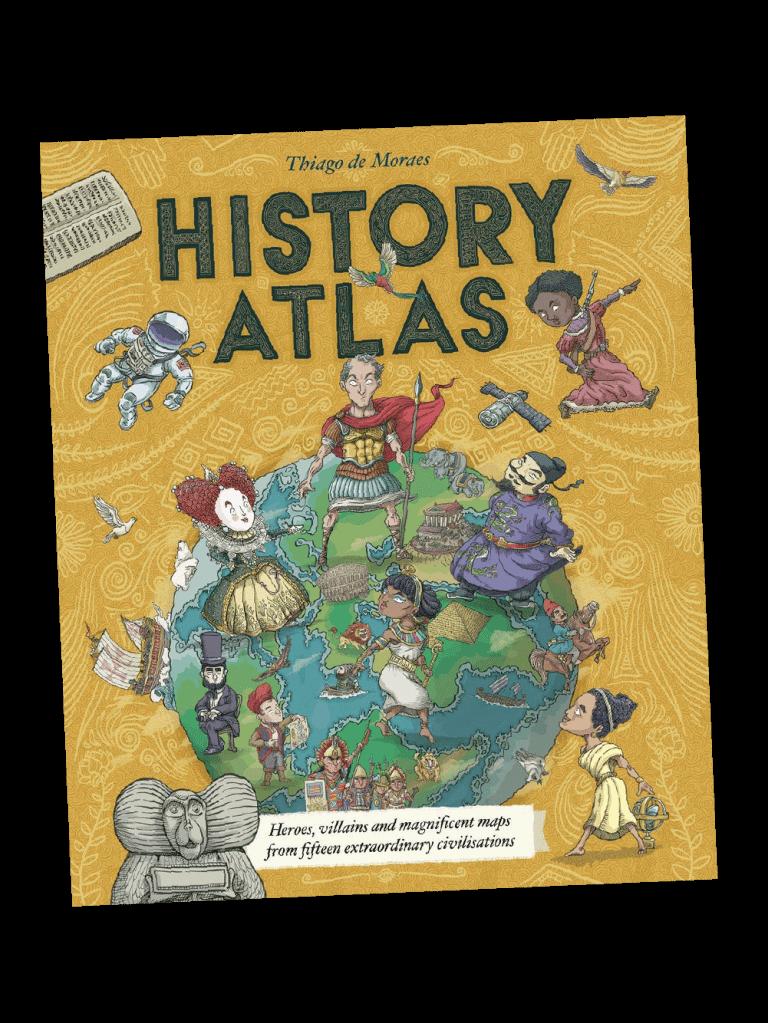
Key Knowledge:

● Outreach Session – recap ancient civilisations overview (chronology)
● Answer …. Can we thank the Ancient Greeks for anything in our lives today? Analyse legacy of Ancient Greece on modern Western world (significance, interpretations, change and continuity)
Civilization An area of human society where new culture, government, industry and or Science has occurred.
Ancient Belonging to the distant past.
Legacy The long lasting impact of an event.
Myth A traditional story that carries a symbol or meaning.
Theatre A building or outdoor area in which plays are

Period A length of time
The Skills:

● To create a timeline to uncover the period - link to reign of Queen Victoria, Industrial Revolution, slave trade and abolition (chronology)
● Make Links back to Quarry Bank Mill (Y3) – examine links to the slave trade (historical evidence, reasons and results)
● Compare photos of Liverpool and Manchester before and after Industrial Revolution – link to impact of slavery (change over time, reasons and results)
● Look at primary and secondary sources linked to abolition of slavery – choose one campaigner (historical evidence, interpretations)

Prosperity Being successful, particularly with money Settlement A place where people live Source Where something comes from Trade Buying and selling goods and services
The Skills:
● When and where – using both a map and creating a timeline (to link back to Iron Age Y3 - Outreach session for chronology)
● Analyse changes over time, interpretations
● Look at the area of Lancashire and extend to NW before and after Roman Invasion (change over time)
Trip to Ribchester Roman Museum
● Trip to International Slavery Museum, Liverpool

given.
Olympics An athletic sports festival
Democracy A government system which is voted by into by people.
The Skills:
● Look at Ancient Greece – when and where? using both a map and creating a timeline (chronology with overview timeline)
● Look at Greek Myths (historical evidence, interpretations)
● Look at theatre (historical evidence, interpretations)
● Look at sport and first Olympic Games (historical evidence - primary sources e.g. vases)
● Look at democracy - definition of democracy – (this will support Year 5 autumn topic – suffragettes)

Local H story British History Global History
-A ocal history study- a study over time tracing how several aspects of national history are reflected in the loca ity (this can go beyond 1066)
-A study of an aspect of h story or a site dating from a period beyond 1066 that s sign ficant in the local ty
-Britain’s settlement by Ang o-Saxons and Scots Non-Statutory Links:
-Roman withdrawa from Britain in c AD 410 and the fal of the western Roman Empire4
-Scots invas ons from Ireland to north Britain (now Scot and)
-Anglo-Saxon invasions, settlements and kingdoms: place names and v llage l fe
-Anglo-Saxon art and cu ture
-Christ an conversion – Canterbury, Iona and L nd sfarne
Being a H stor an: -Develop a chronolog cally secure knowledge and understand ng of British, ocal and wor d history, establ shing clear narratives within and across the per ods they study -Note connections, contrasts and trends over time and develop the appropriate use of historical terms.
- Regularly address and sometimes devise historically val d quest ons about change, cause, similarity and difference, and significance -Construct nformed responses that involve thoughtful se ection and organisation of relevant historical information
- Understand how our know edge of the past is constructed from a range of sources.
-A non-European society that provides contrasts w th Br tish h story – one study chosen from: early Islamic civilizat on including a study of Baghdad c AD 900; Mayan c vi ization c AD 900; Benin (West Africa) c AD 900-1300
Year 5- National Curriculum

AUTUMN TERM
LOCAL HISTORY
YEAR 5
Concepts
A study of an aspect in British history that extends pupils’ chronological knowledge:
Build an overv ew of local/British/World History
Understand chronology and concepts
Communicate h storica ly
Investigate and interpret the past
Enquiry
Vocabulary
Enquiry: How did the Suffragettes change the lives of people in Manchester?
Era, Millennium / century / decade, Extent of : change/continuity, Weigh up both sides, Primary evidence, Secondary evidence, Eye witness, Reliable, Legacy, Suffragette, Equality
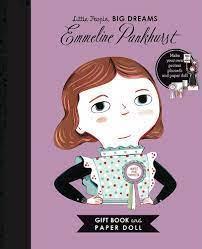
Key Knowledge:
Key skills and knowledg e

● Build upon Definition of democracy from Y4 summer term Ancient Greece. Why is democracy important? (significance)
● Look at Statue of Emmeline Pankhurst in Manchester (2018). Children raise questions. Why is this person important? (significance, interpretations)
● Look at the life of Emmeline Pankhurst and notable events (chronology, significance) Look at campaign posters/photos What can we learn about the campaign? (historical evidence -primary sources, interpretations)
● Look at the suffrage campaign database website Database - Women's Suffrage Resources to find women in Manchester who signed the 1866 petition and/or appear in the 1914 Home Office arrest records (historical evidence - primary sources)
● Look at militant tactics and arrests from primary sources Debate - were the Suffragettes right to break the law? (reasons and results, interpretations
● Answer enquiry question - how did the Suffragettes
SPRING TERM BRITISH HISTORY
SUMMER TERM GLOBAL HISTORY
Britain’s settlement by Anglo-Saxons: A non-European society that provides contrasts with British history: early Islamic civilization, including a study of Baghdad c. AD 900:
Build an overview of local/British/World H story
Understand chronology and concepts
Communicate historically
Invest gate and interpret the past
Enquiry: How did the Anglo-Saxons change Britain?
Era, Millennium / century / decade, Extent of : change/continuity, Weigh up both sides, Primary evidence, Secondary evidence, Eye witness, Reliable, Legacy, Culture, Religion,
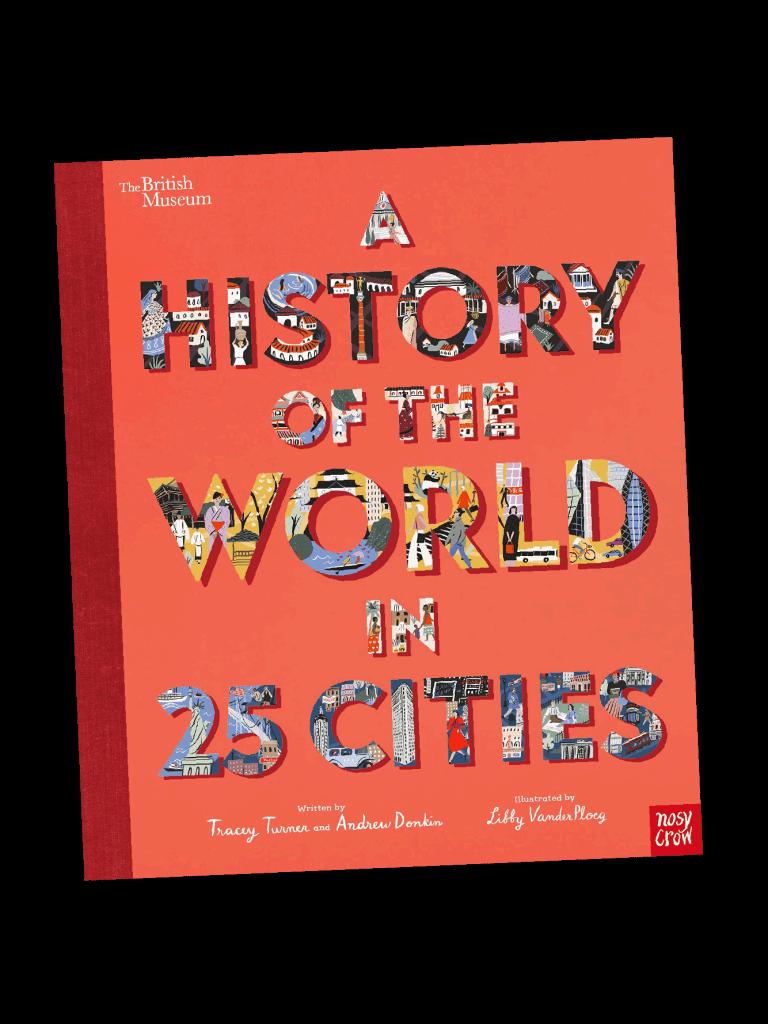

● What happened after the Romans left?
● Compare pics from A Street Through Time – Roman Britain to Anglo Saxon Britain (interpretations) Why was it called the Dark Ages?
● Why is it difficult to find out about this period? (historical evidence, change over time)
● Old English language (primary sources, significance) Sutton Hoo excavation 1939 (historical evidence, interpretations)
● What can we learn from an Anglo Saxon coin? (historical evidence -primary sources)
● Answer enquiry question ..How did the Anglo-Saxons change Britain? (significance, reasons and results, change over time)

Bu d an overview of local/British/World History
Understand chronology and concepts
Communicate historically
Investigate and interpret the past
Enquiry: How does The Golden Age of Islam contrast with the Anglo-Saxon Britain?
Era, Millennium / century / decade, Extent of : change/continuity, Weigh up both sides, Primary evidence, Secondary evidence, Eye witness, Reliable, Legacy, Ancient Islam: Bagdad, knowledge, science, mathematics, influential, tolerance, caliphate, silk roads
Key Knowledge:
● Recap Anglo Saxon Britain and show Baghdad and London on map.
● Look at citizens of Baghdad – everyday life, school and education (historical evidence)
● Look at The House of Wisdom (historical evidence)
● Look at Al-Zahrawi and contributions to medicine (historical evidence, significance)
● Compare achievements to those of Anglo- Saxon Britain (historical similarity and difference)
● What is the legacy of the Golden Age of Islam on the world today? (significance, reasons and results)
Education
House of Wisdom

Advances To advance means to make progress, especially in knowledge of something
Caliph The chief Muslim civil and religious ruler.
The process of acquiring knowledge.
A public academy in Baghdad.
Achievement Something a person or people has accomplished.
Islam The religion of Muslims
Overview A short description of something.
The Skills:
● Construct overview timeline to show AD900 in context of other history topics already learned (chronology)
● Look at citizens of Baghdad – everyday life, school and education (historical evidence)


change life for women in Manchester? (historical cause and effect, significance)
Suffragette People who formed the campaign for ‘votes for woman’
Resource A source of supply, support or aid.
Militant Aggressively active in supporting a cause.
Tactic Doing something to achieve an end.
Law A rule enforced to have control over something.
The Skills:
● Big Picture - track timeline back from current day voting rights to beginning of 19th century. When do children think all adults were able to vote? Plot events on timeline. (chronology, change over time)
● Produce a timeline to add on previously learnt eventsabolition of slavery (1833) and Factory Act (1833) and Link to big picture of Industrial Revolution (chronology)
● Look at Statue of Emmeline Pankhurst in Manchester (2018). Children raise questions. Why is this person important? (significance, interpretations)

● Look at the life of Emmeline Pankhurst and notable events (chronology, significance) Look at campaign posters/photos What can we learn about the campaign? (historical evidence -primary sources, interpretations)
● Look at the suffrage campaign database website Database - Women's Suffrage Resources to find women in Manchester who signed the 1866 petition and/or appear in the 1914 Home Office arrest records (historical evidence - primary sources)
● Look at militant tactics and arrests from primary sources Debate - were the Suffragettes right to break the law? (reasons and results, interpretations
●
Trip to People's History Museum Manchester
Caravans A caravan is a group of people and animals or vehicles who travel together.
Cosmopolitan A cosmopolitan place or society is full of people from many different countries and cultures.
Culture A culture is a particular society or civilization, especially considered in relation to its beliefs, way of life, or art
Fertile (soil) Land or soil that is fertile is able to support the growth of a large number of strong healthy plants.
Invade (noun form invasion) To invade a country means to enter it by force with an army.
Monasteries A monastery is a building or collection of buildings in which monks (male members of religious communities that are usually separated from the outside world) live
Mosque A mosque is a building where Muslims go to worship
Navigate To navigate is to plan and direct the course of a ship (or other form of transport) especially by using instruments or maps.
Population The population of a country or area is all the people who live in it.
Scholar A scholar is a person who studies an academic subject and knows a lot about it.
Settlement A place where people live.
Thatched Covered with a roofing material that consists of straw or similar material
Trade Buying and selling goods and services
Traditional Traditional customs, beliefs, or methods are ones that have existed for a long time without changing.
The Skills:
● Create an overview timeline of Anglo-Saxon period (chronology)
● Compare pics from A Street Through Time – Roman Britain to Anglo Saxon Britain (interpretations) Why was it called the Dark Ages?
● Look at Anglo Saxon place names (primary sources, reasons and results)

● Look at The House of Wisdom (historical evidence)
● Look at Al-Zahrawi and contributions to medicine (historical evidence, significance)
● Compare achievements to those of Anglo- Saxon Britain (historical similarity and difference)
●

Year 6- National Curriculum
Local H story
-A study of an aspect or theme in Br tish history that extends pupi s’ chronological knowledge beyond 1066
British History
-The Vik ng and Ang o-Saxon struggle for the K ngdom of Eng and to the time of Edward the Confessor
Non Statutory l nks:
-Viking ra ds and invas on
-Resistance by Alfred the Great and Athelstan, first king of England
-Further Viking nvasions and Danegeld
-Anglo-Saxon laws and just ce
-Edward the Confessor and his death n 1066
Being a H stor an:
-Develop a chronolog cally secure knowledge and understand ng of British, ocal and wor d history, establ shing clear narratives within and across the per ods they study
-Note connections, contrasts and trends over time and develop the appropriate use of historical terms.
- Regularly address and sometimes devise historically val d quest ons about change, cause, similarity and difference, and significance
-Construct nformed responses that involve thoughtful se ection and organisation of relevant historical information
- Understand how our know edge of the past is constructed from a range of sources
AUTUMN TERM LOCAL HISTORY
YEAR 6
Concepts
A study of an aspect in British history that extends pupils’ chronological knowledge – a significant turning point in British history:
Build an overv ew of local/British/World History
Understand chronology and concepts
Communicate h storica ly
Investigate and interpret the past
SPRING TERM BRITISH HISTORY
Viking and Anglo-Saxon struggle for the Kingdom of England:
Build an overview of local/British/World H story
Understand chronology and concepts
Communicate historically
Invest gate and interpret the past

Global History
-A non-European society that provides contrasts w th Br tish h story – one study chosen from: early Islamic civilizat on including a study of Baghdad c AD 900; Mayan c vi ization c AD 900; Benin (West Africa) c AD 900-1300
SUMMER TERM GLOBAL HISTORY
A non-European society that provides contrast with British history: Mayan civilization c. AD 900:
Bu d an overview of local/British/World History
Understand chronology and concepts
Communicate historically
Investigate and interpret the past Enquiry
Enquiry: What was the impact of the WWI on local people’s lives?
Vocabulary
Anachronism, Culture, Stereotype, Excavate, WW1: alliance, war, navy, army
Enquiry: How and why did the Vikings invade Britain?
Anachronism, Culture, Stereotype, Excavate, Invader Viking Anglo-Saxon Religion Conversion
Enquiry: How does Mayan civilisation contrast with Anglo-Saxon Britain?
Anachronism, Culture, Stereotype, Excavate, Glyphs Codices Cacao

Key skills and knowledg

Key Knowledge:


Key Knowledge:

Key Knowledge:
● Where were the Maya?
● How do we know about the Maya?
● Answer …. How does Mayan civilisation contrast with Anglo-Saxon Britain? (significance, interpretations, change and continuity)



Maya The Hindu Goddess of Wealth but can also mean an illusion or dream.
Contrast Being strikingly different.
Significance Being worthy of attention.
Interpretation Explaining the meaning of something
● What changes did WWI have on Britain at that time – why did this happen (reasons and results)
● Look at Accrington pals – why did this happen (reasons and results)
● Trip to Imperial War Museum North/ Links to Hanger 47
Ancestor A person you are related to who lived a long time ago
Chronological Arranged in order of time
Evolve Develop gradually
Industry A group of businesses that provide certain goods or services
Invasion Entering a place as an enemy in an attempt to take control of it
Nomadic Travelling from place to place instead of living in one place
Poverty Having an income that is not enough to meet a person's basic needs
Prosperity Being successful, particularly with money
Settlement A place where people live
Source Where something comes from
Trade Buying and selling goods and services
The Skills:
● Extend timeline from 1900s onwards to include WWI and start of WW2 (chronology)
● Look at WWI 1914-1918 – overview of events (chronology)
● Look at evidence and written accounts to identify population trends during WWI ‘The Lost Generation’ (historical evidence – primary sources, interpretations)
● Multi-flow graphic organiser to show cause and effect of WWI on population movements and changes (reasons and results, change over time)
● Look at photos and evidence to anaylse the impact of

● Who were the Vikings and where did they come from?
● Why did the Vikings come to Britain? (historical cause and effect)
● How do we know about Viking Britain?
Advances To advance means to make progress, especially in knowledge of something.
Caliph The chief Muslim civil and religious ruler
Caravans A caravan is a group of people and animals or vehicles who travel together
Cosmopolitan A cosmopolitan place or society is full of people from many different countries and cultures
Culture A culture is a particular society or civilization, especially considered in relation to its beliefs, way of life, or art.
Fertile (soil) Land or soil that is fertile is able to support the growth of a large number of strong healthy plants
Invade (noun form invasion) To invade a country means to enter it by force with an army
Monasteries A monastery is a building or collection of buildings in which monks (male members of religious communities that are usually separated from the outside world) live
Mosque A mosque is a building where Muslims go to worship
Navigate To navigate is to plan and direct the course of a ship (or other form of transport) especially by using instruments or maps.
Population The population of a country or area is all the people who live in it.
Scholar A scholar is a person who studies an academic subject and knows a lot about it.
Settlement A place where people live
Thatched Covered with a roofing material that consists of straw or similar material
Trade Buying and selling goods and services
Continuity The operation of something over time.
Anachronism An error in chronology
Stereotype A fixed idea or image of something which might not necessarily be true.
Excavate Make by digging
Glyphs A symbol that represents a word or letter.
Codices A manuscript book
Cacao Seeds from a small tropical evergreen tree in America.
The Skills:
● Construct overview timeline to show other history topics already learned (chronology)
● Where were the Maya? Place on map (link to geography)
● How do we know about the Maya? Look at primary sources (historical evidence)

Freckleton Air Disaster on the local area in WW2
Focusing on if there was no war then no air base and no local disaster (historical evidence – primary sources)
●

Traditional Traditional customs, beliefs, or methods are ones that have existed for a long time without changing
The Skills:
● Timeline to show Viking Raids within British History (chronology)
● Who were the Vikings and where did they come from? Show on map





